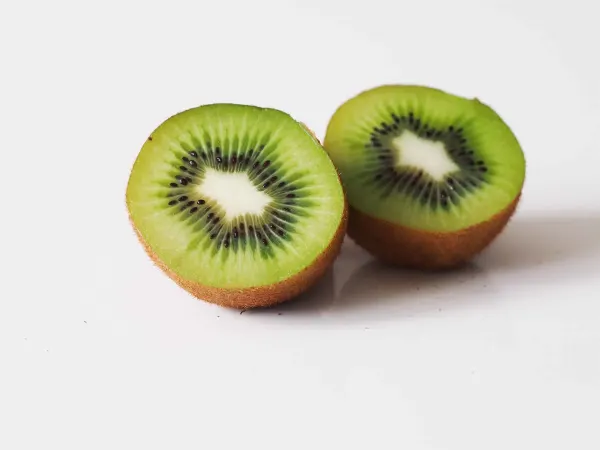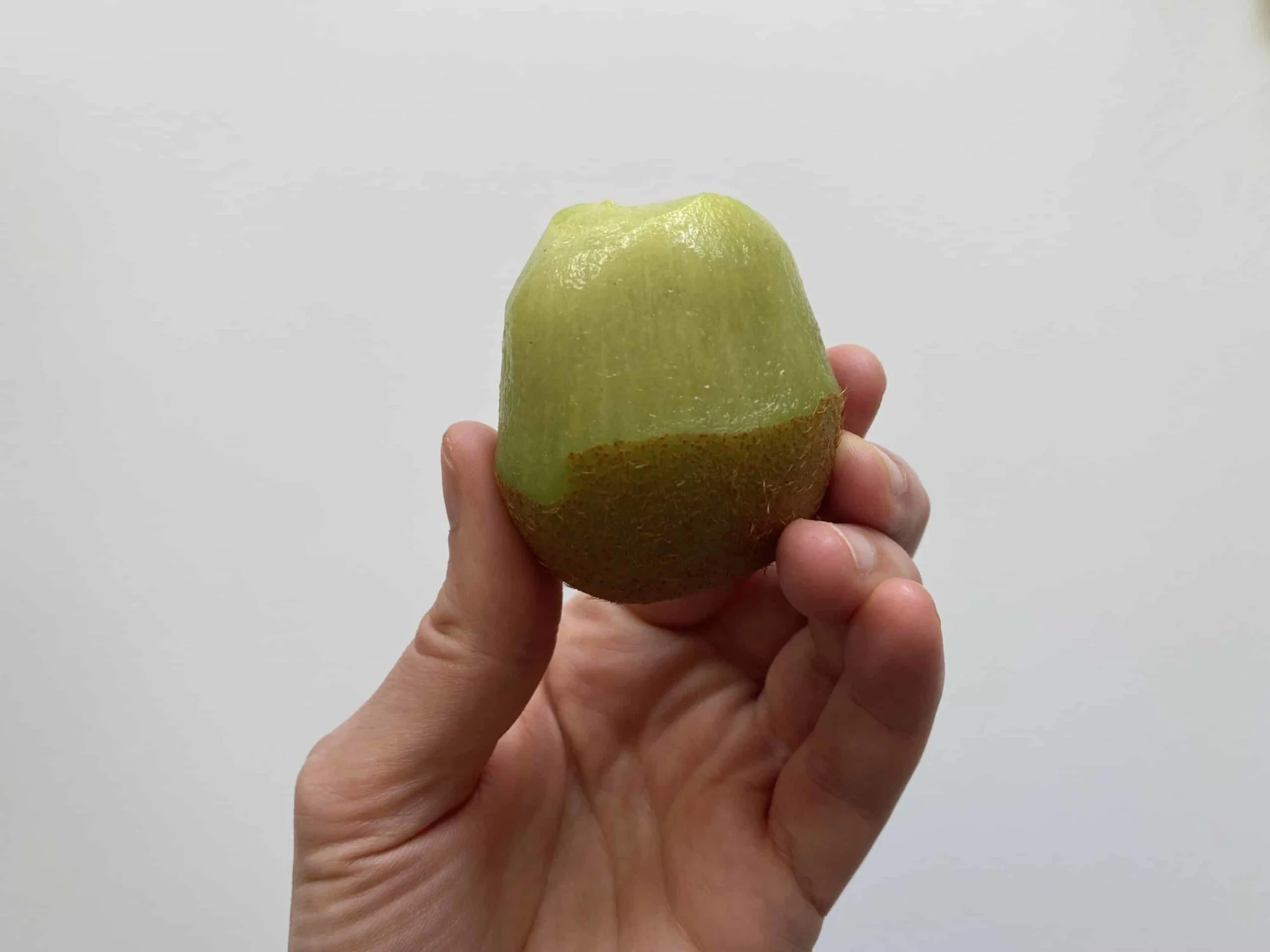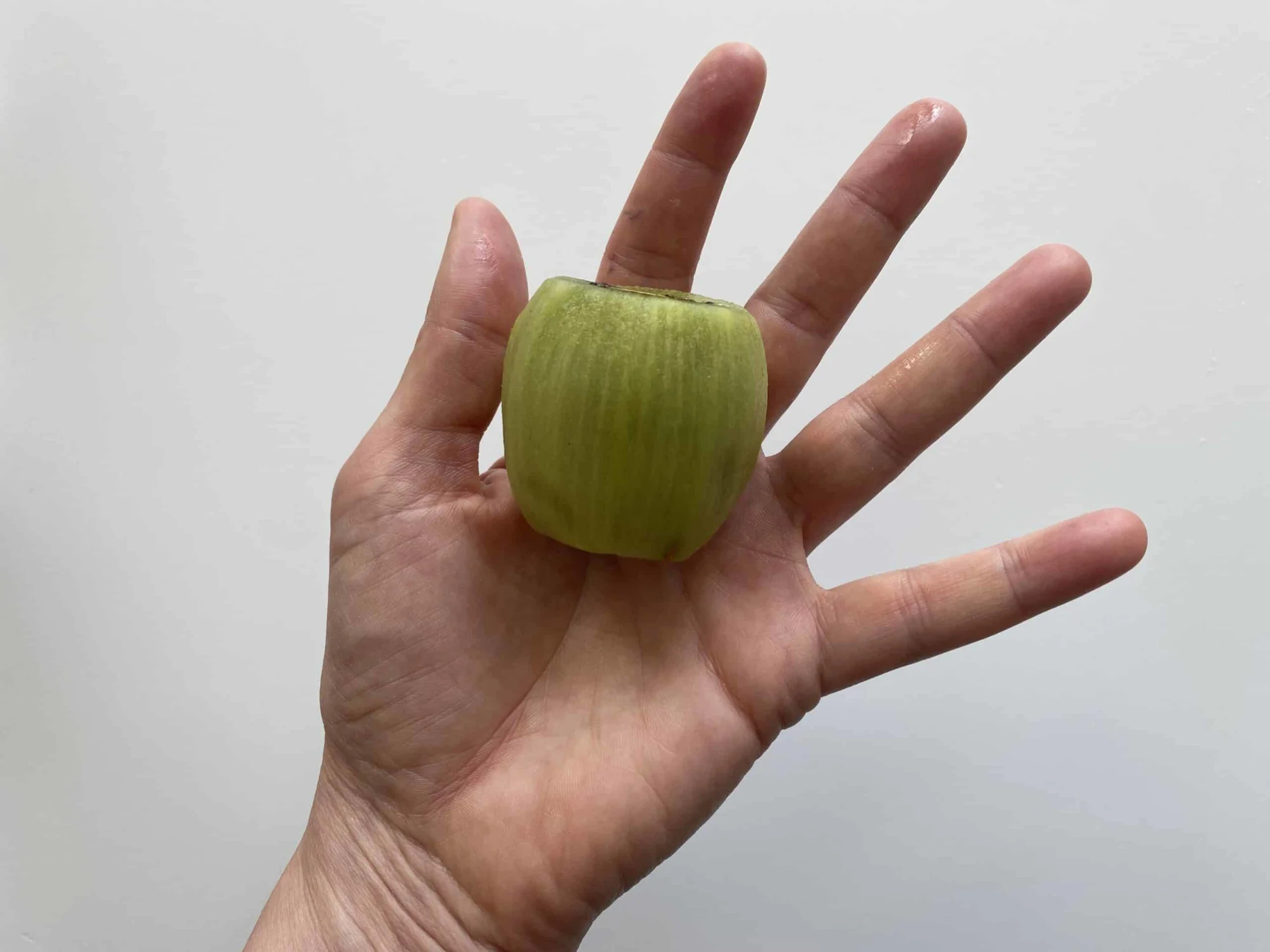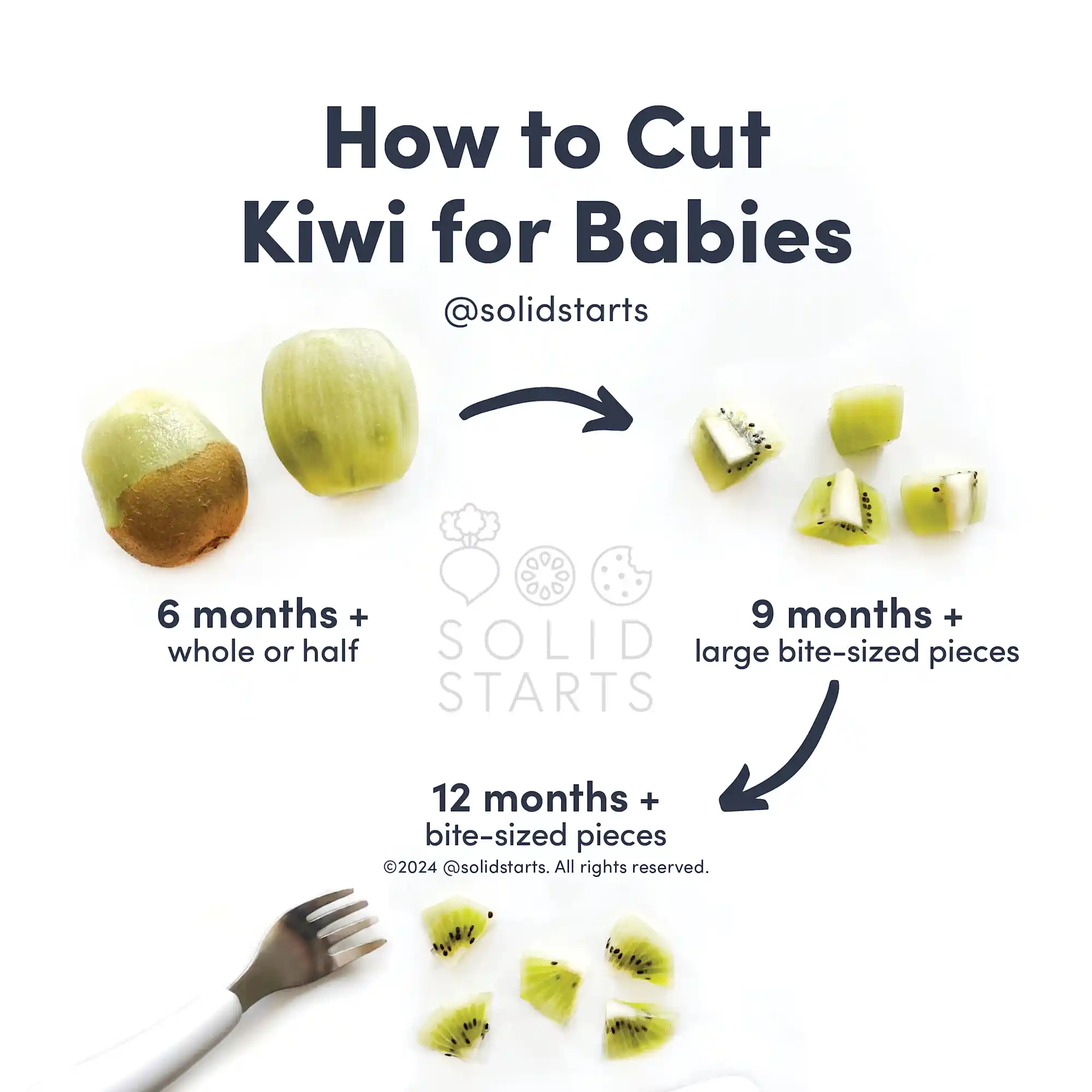Kiwi
Fruit
Age Suggestion
6 months
Iron-Rich
No
Common Allergen
No

When can babies have kiwi?
Kiwi may be introduced as soon as baby is ready to start solids, which is generally around 6 months of age.
Kiwi originated in East Asia, where it is called kei ji gwo and míhóutáo, among other names. Kiwis are now grown commercially across the globe, including in New Zealand, where the crop has been successful and widespread. In fact, the fruit was known as gooseberry until entrepreneurial New Zealanders rebranded it with the name of the fuzzy, brown-skinned kiwi bird living all over their islands.
Is kiwi healthy for babies?
Yes. Kiwis offer a remarkable number of nutrients that are important for early growth. Kiwi is rich in both soluble and insoluble fibers to support digestion and baby’s developing gut microbiome. The fruit also offers a good amount of vitamins C and E, which support immunity, power organ functions, and aid cell growth and repair. Lastly, kiwi is loaded with phytonutrients and enzymes that are anti-inflammatory, antimicrobial, anti-cancerous, and that support heart, skin, and digestive health.
★Tip: Kiwi lasts up to a week in the fridge and is best stored away from other fruit. The natural ripening compounds in other fruits, such as bananas, can speed up kiwi’s ripening, shortening its shelf life.
Is kiwi a common allergen?
No. While kiwi is not considered to be a common food allergen, allergies to kiwi are being increasingly reported, with reactions ranging from mild to severe. Additionally, some individuals may be sensitive to actinidin, an enzyme that is naturally present in kiwi, and can also be used as a meat tenderizer in other foods.
Individuals with latex-fruit syndrome (including avocado, banana, and chestnut) may be allergic to kiwi as well. Kiwi has multiple protein allergens that have been identified, many of which cross-react with other food allergens, such as peanut, tree nuts, and stone fruits. However, it is rare for an individual to be sensitized to all the possible kiwi allergens, and most people with kiwi allergies can safely consume these other foods. Individuals with Oral Allergy Syndrome due to birch or beech pollen allergy (also known as pollen food allergy) may also be sensitive to kiwi. Oral Allergy Syndrome typically results in short-lived itching, burning, or tingling in the mouth and is unlikely to result in a dangerous reaction. Peeling or cooking kiwi can help minimize the reaction.
Acidic foods like kiwi are often mistaken for allergens as they can cause a harmless rash around the mouth as baby eats and can cause or worsen diaper rashes. Barrier ointments can be applied to the face before mealtime to help protect the skin from acidic foods.
Kiwi does contain enzymes called proteases which can break down proteins in the mouth and cause irritation or bleeding if the kiwi is consumed when not fully ripe, or in excess. To limit these reactions, ensure that you only serve kiwi that is fully ripe, serve modest quantities at a time, and serve kiwi alongside other foods.
As you would when introducing any new food, start by serving a small quantity of kiwi on its own. If there is no adverse reaction, gradually increase the quantity over future servings.
Is kiwi a choking hazard for babies?
Yes. The flesh of kiwis can be firm and slippery, two qualities that increase the risk of choking. To reduce the risk, prepare and serve kiwi in an age-appropriate way. As always, make sure to create a safe eating environment and stay within an arm’s reach of a baby during mealtime. For more information, visit our section on gagging and choking and familiarize yourself with common choking hazards.
Videos
Is kiwi skin edible?
Yes, all varieties of kiwi skin are edible and are high in a number of beneficial nutrients (fiber, various antioxidants, and more). Kiwi skin may have some pesticide residue, although this can be reduced by washing in water.
When can babies have kiwi juice?
Wait to serve kiwi juice as a drink until after 12 months of age. Note that it can be beneficial to wait until after a child is older to regularly share juice and other sugary drinks. Research suggests that regular intake of juice and other sweet drinks tends to increase the risk of dental cavities and take up space in the belly, which may decrease a child’s motivation to eat other foods at mealtime and may negatively affect the child’s growth. However, occasional, small servings of juice after one year of age generally isn’t a cause for concern. Learn more about serving juice to babies and toddlers.
How do you serve kiwi to babies?
Every baby develops on their own timeline, and the suggestions on how to cut or prepare particular foods are generalizations for a broad audience.
6 months old +:
Serve peeled or unpeeled ripe whole kiwis for baby to munch from. Offering a whole kiwi with half of the skin left on works well as baby can more easily hold the part with the skin and munch at the fruit that does not have the skin. The skin is edible though it may contain pesticides. You can also serve a ripe kiwi half, as long as the child is not overstuffing their mouth with an entire half. Either way, make sure the kiwi is ripe, soft, and smashes easily with light pressure. You can also mash the kiwi and mix it with unsweetened coconut cream, yogurt, or ricotta cheese.
9 months old +:
Try offering kiwi, with skin on or off, chopped into large bite-sized pieces (since kiwi is slippery, small bite-sized pieces may be too tricky for this age) or thin slices. If the kiwi pieces are too slippery and baby gets frustrated, roll them in a finely ground food like shredded coconut flakes, breadcrumbs, crushed cereal, hemp seed, or finely ground nut. If baby isn’t able to pick up small pieces of food yet, keep serving ripe kiwi whole or cut in half or continue to mash the fruit into other scoopable foods.
12 months old +:
Offer bite-sized pieces of ripe, peeled or unpeeled kiwi as finger food or serve with a fork to encourage utensil practice. At this age, the pieces can be a bit smaller as a child’s pincer grasp has more fully developed. Kiwi can be added as a sweet topping to foods like oatmeal, quinoa, rice, yogurt, and even fish and chicken dishes.


Mix up your mornings with ideas from our guide, 50 Breakfasts for Babies & Toddlers.
Written by
Expert Tips Delivered to Your Inbox
Sign up for weekly tips, recipes and more!
The content offered on SolidStarts.com is for informational purposes only. Solidstarts is not engaged in rendering professional advice, whether medical or otherwise, to individual users or their children or families. No content on this site, regardless of date, should ever be used as a substitute for direct medical advice from your doctor or your medical or health professional, nutritionist, or expert in pediatric feeding and eating. By accessing the content on SolidStarts.com, you acknowledge and agree that you are accepting the responsibility for your child’s health and well-being. In return for providing you with an array of content “baby-led weaning” information, you waive any claims that you or your child may have as a result of utilizing the content on SolidStarts.com.









